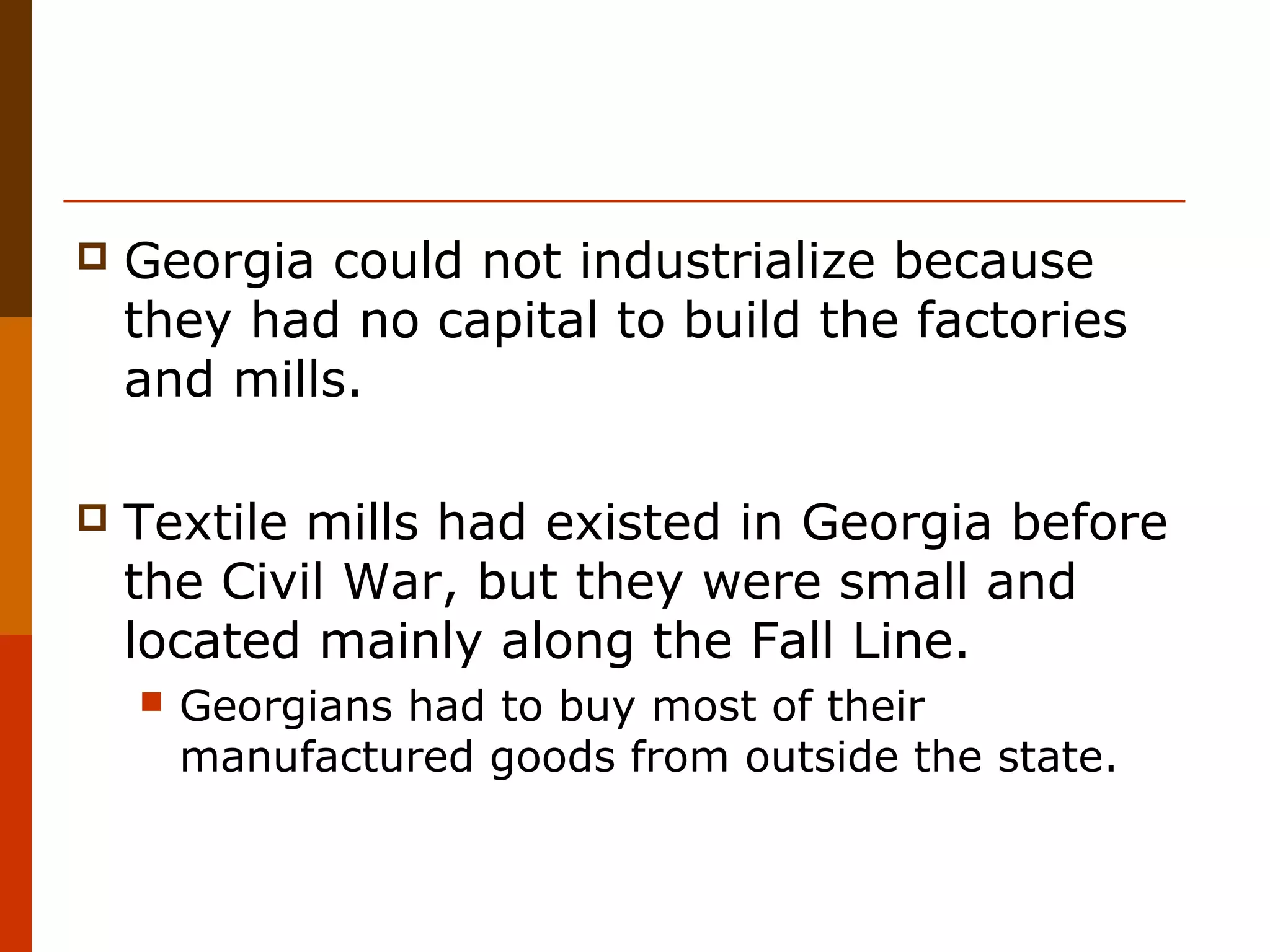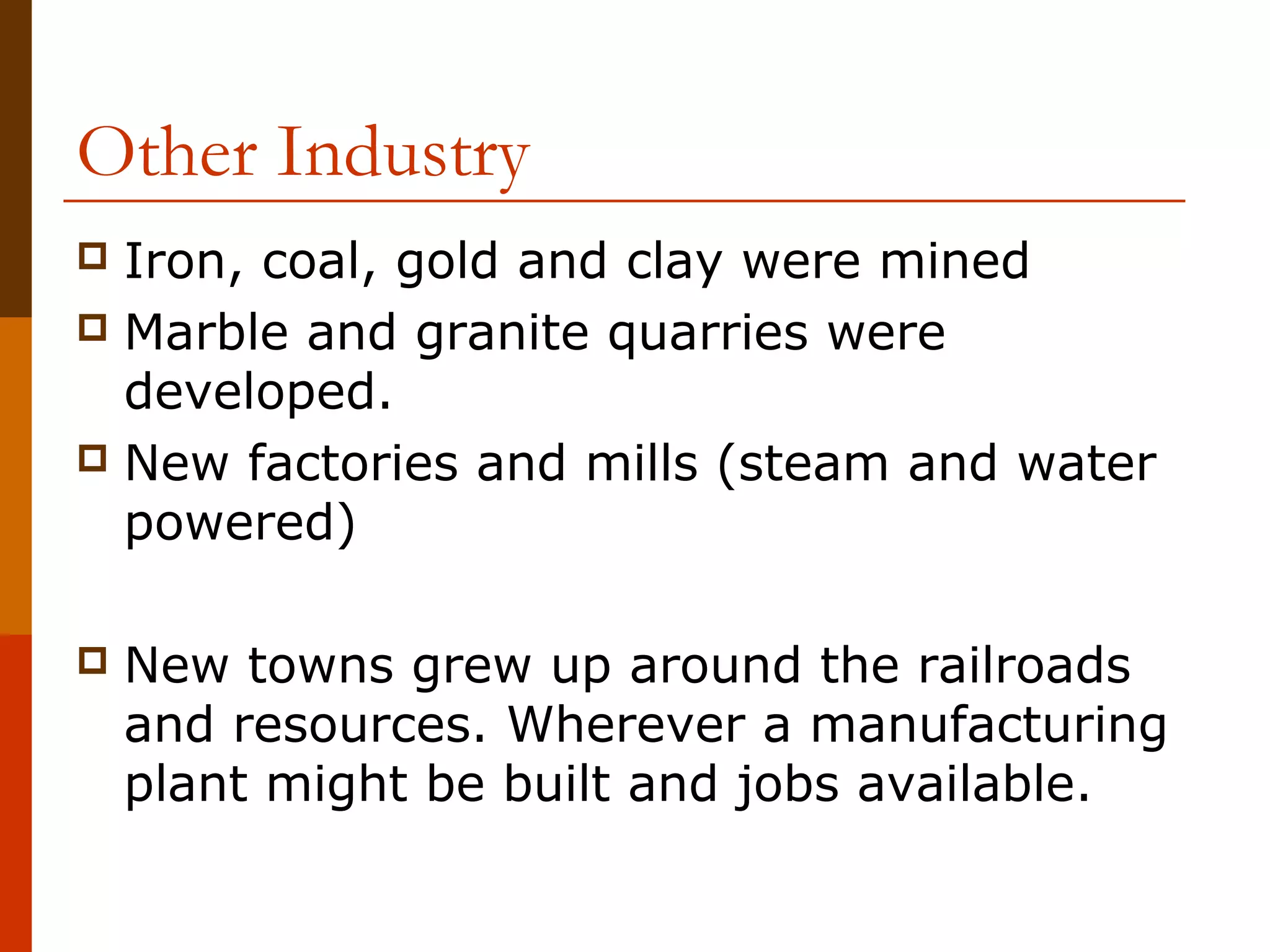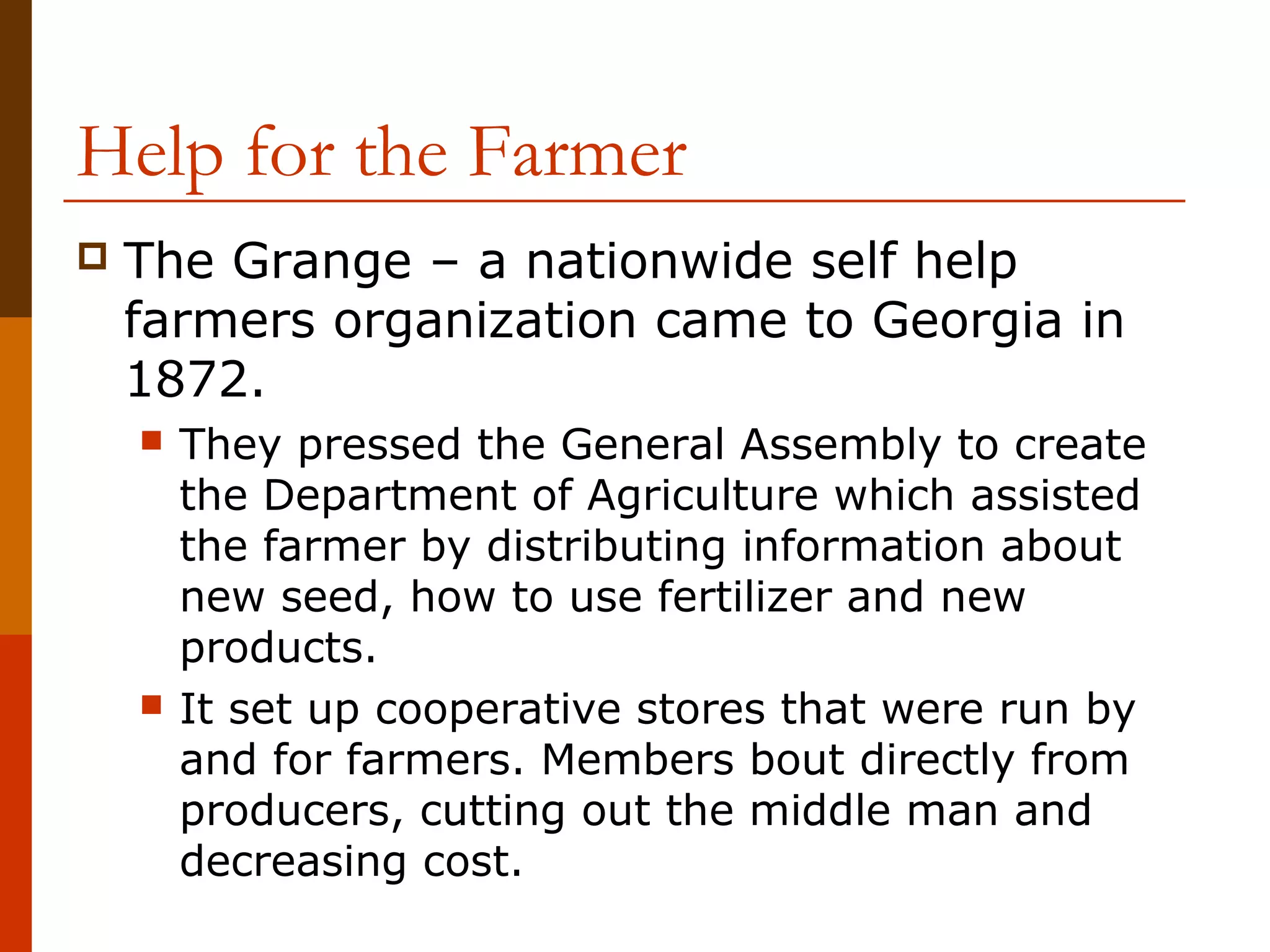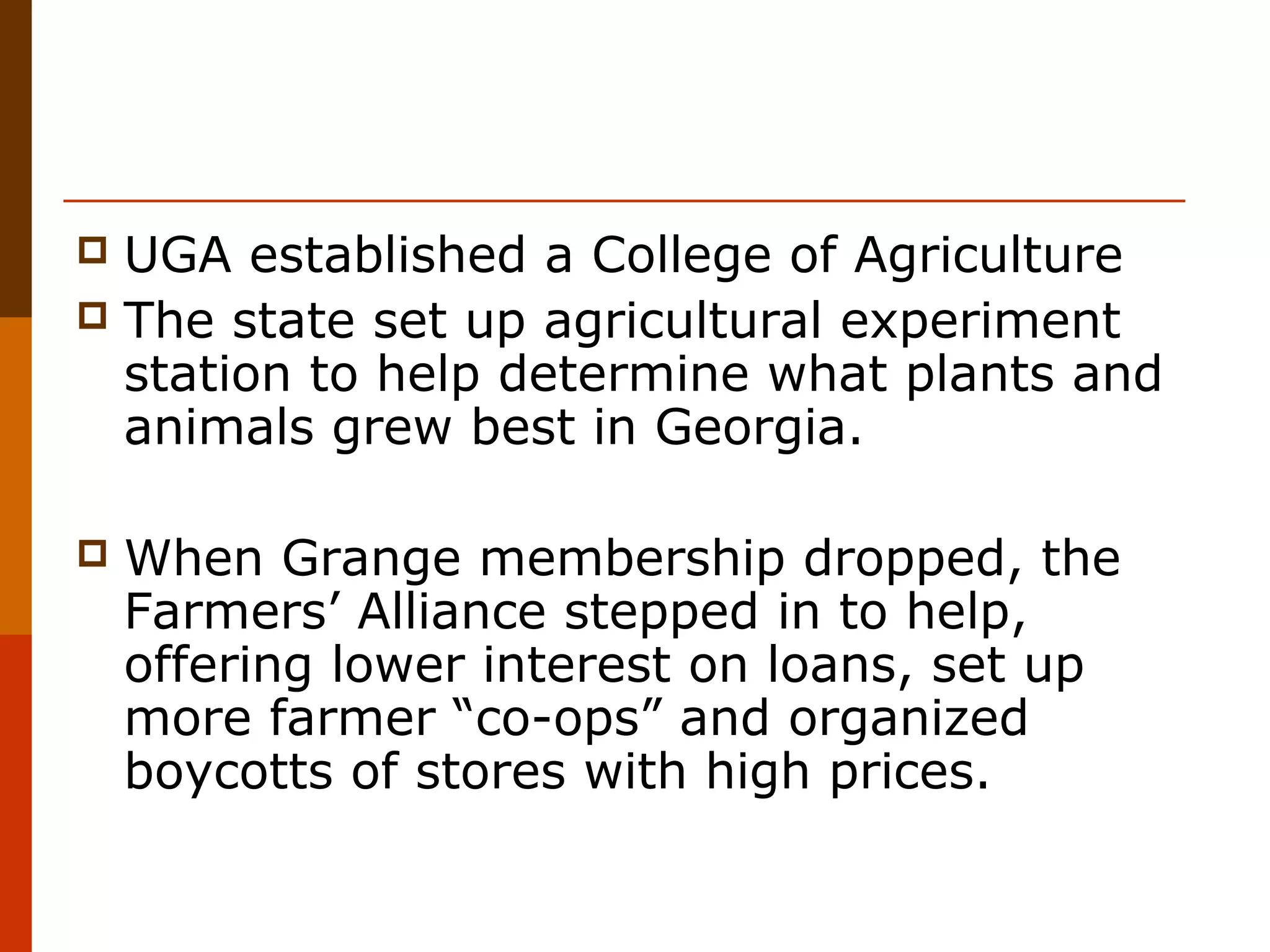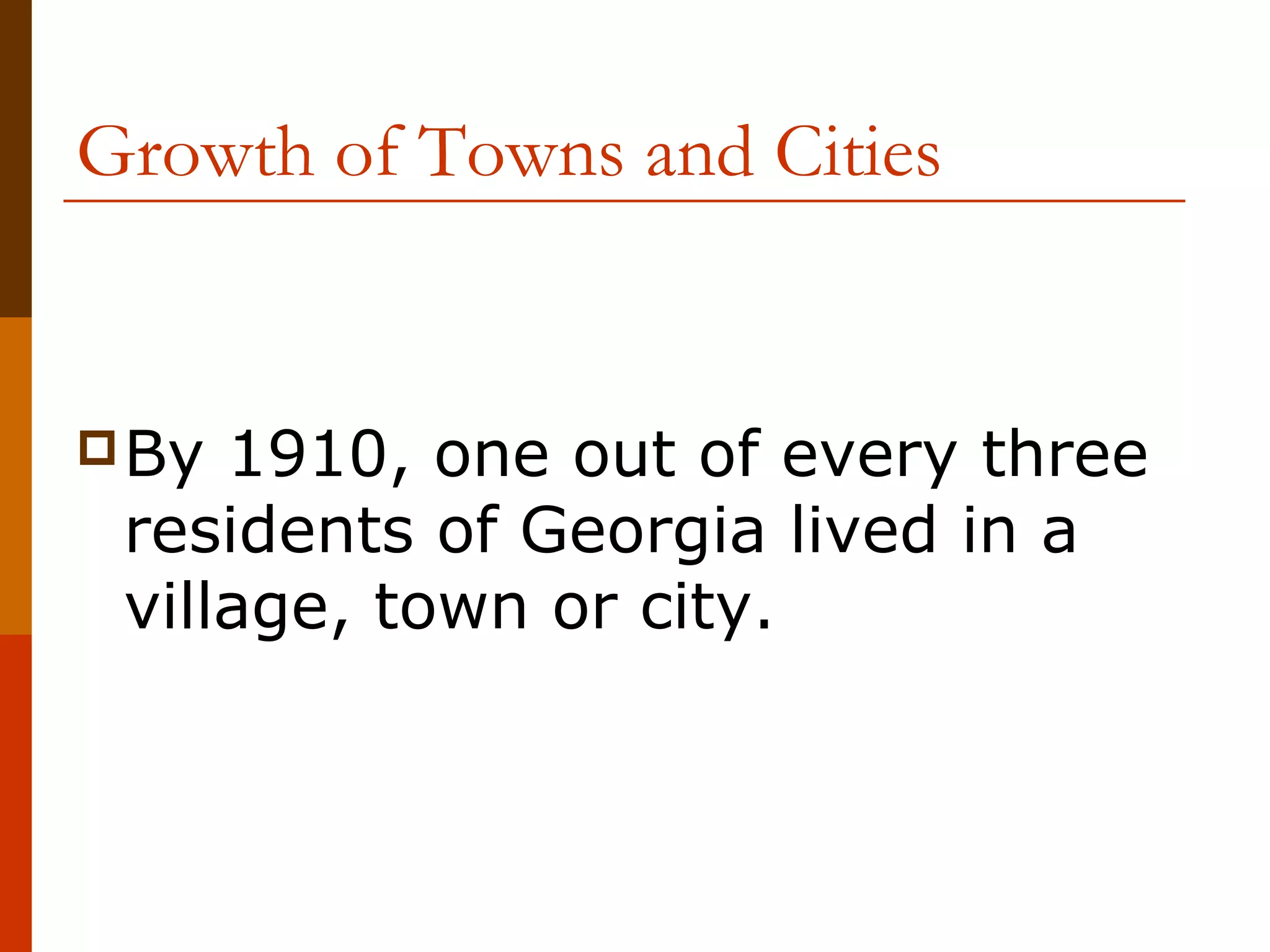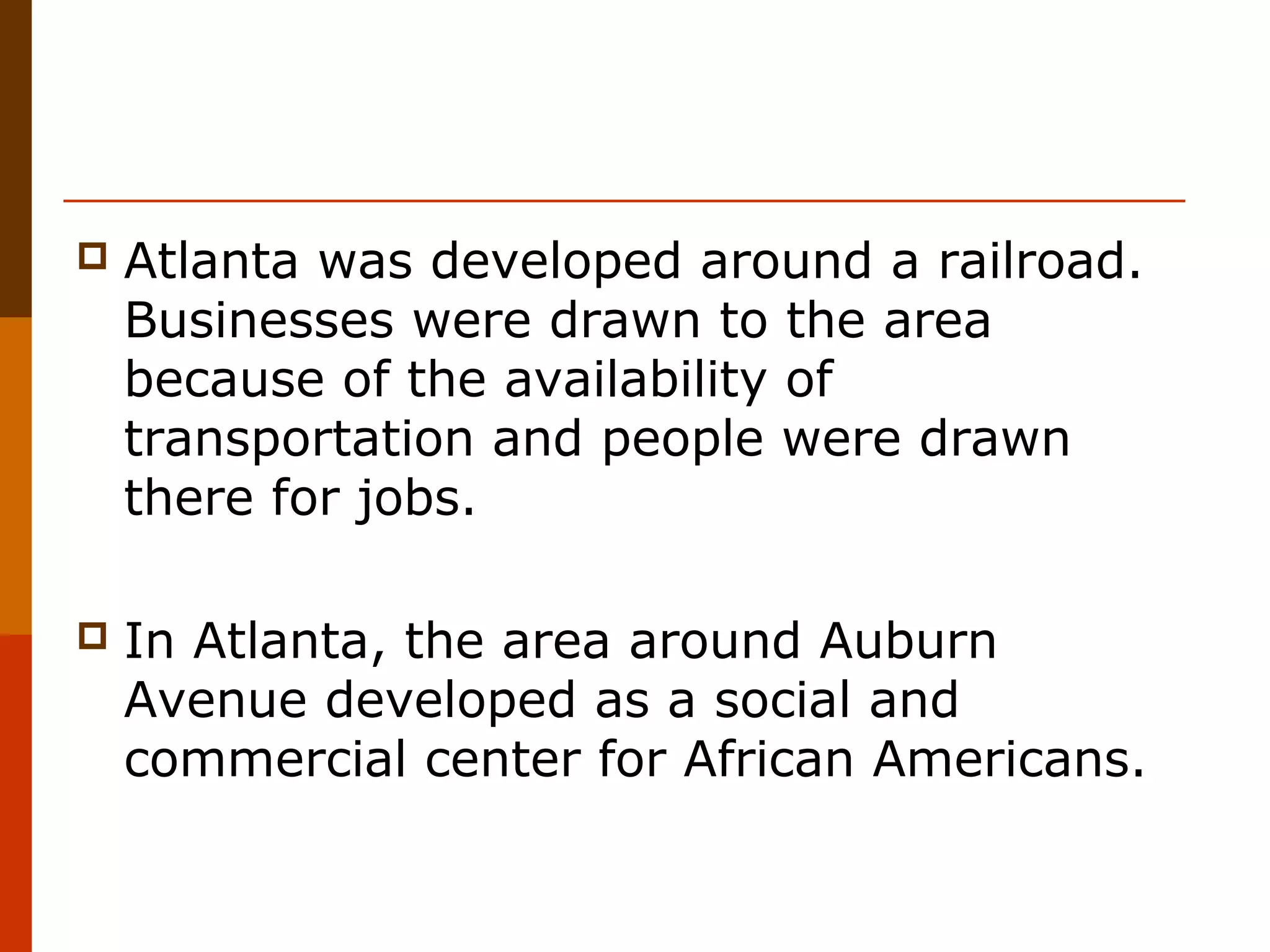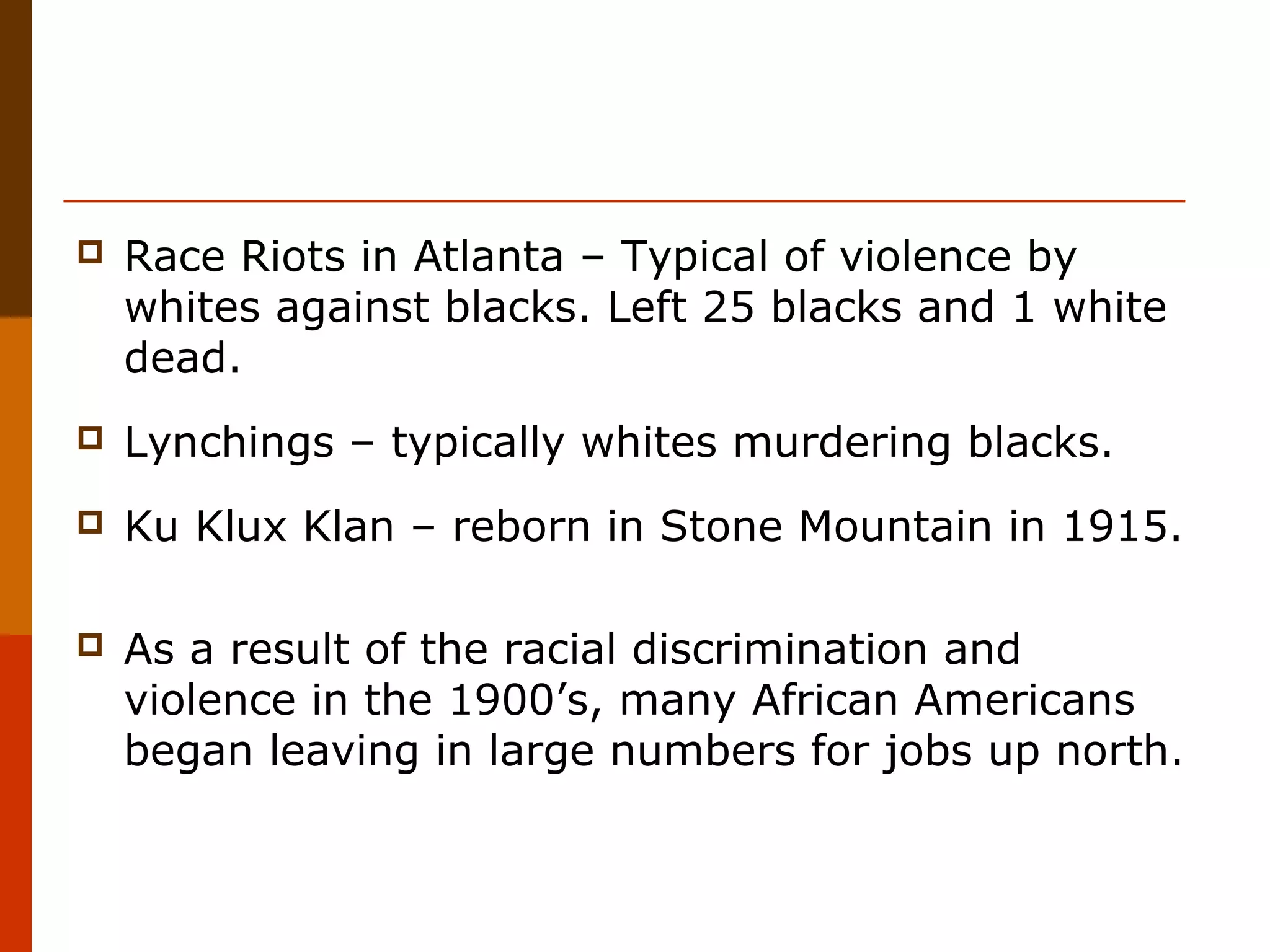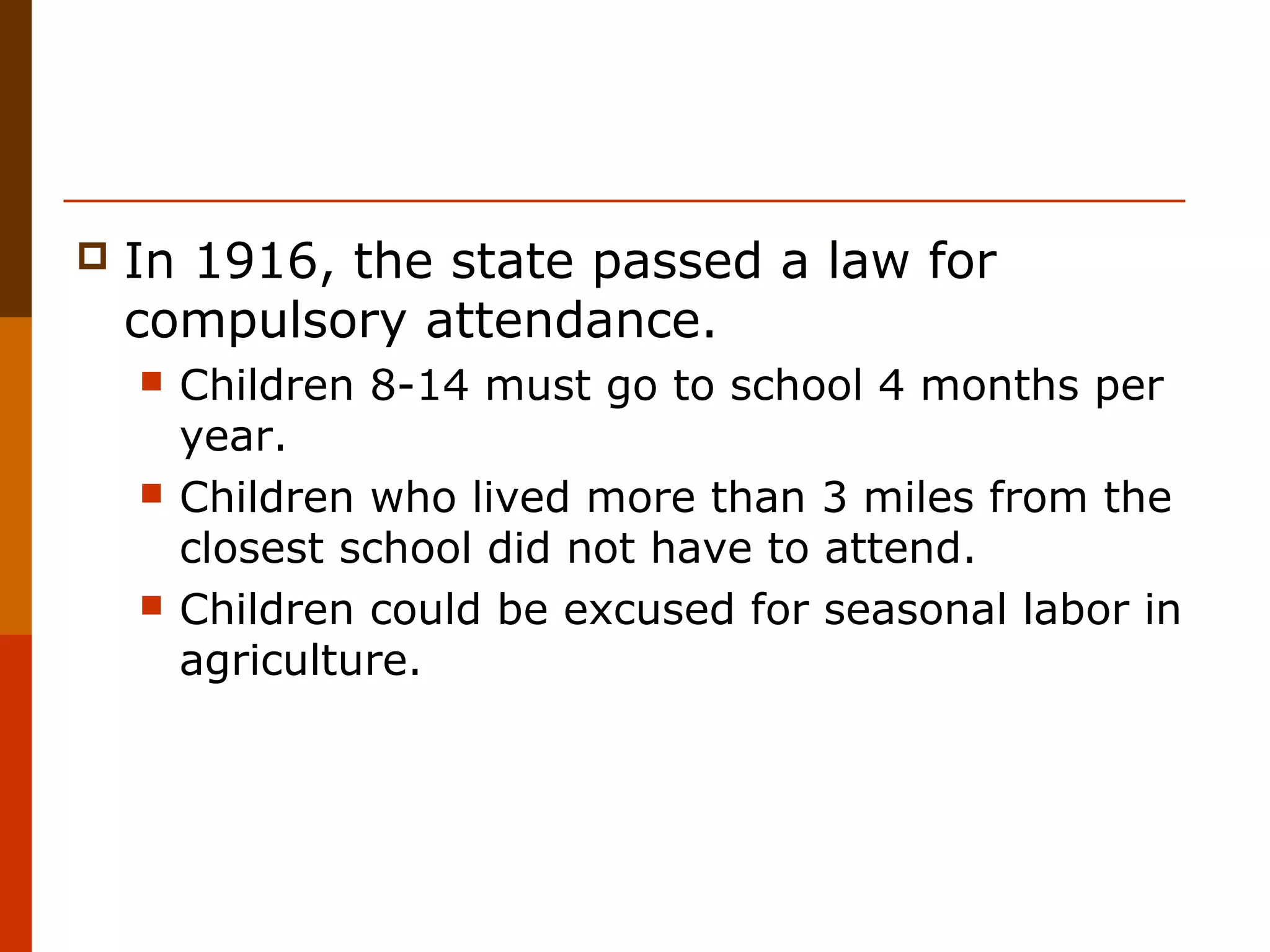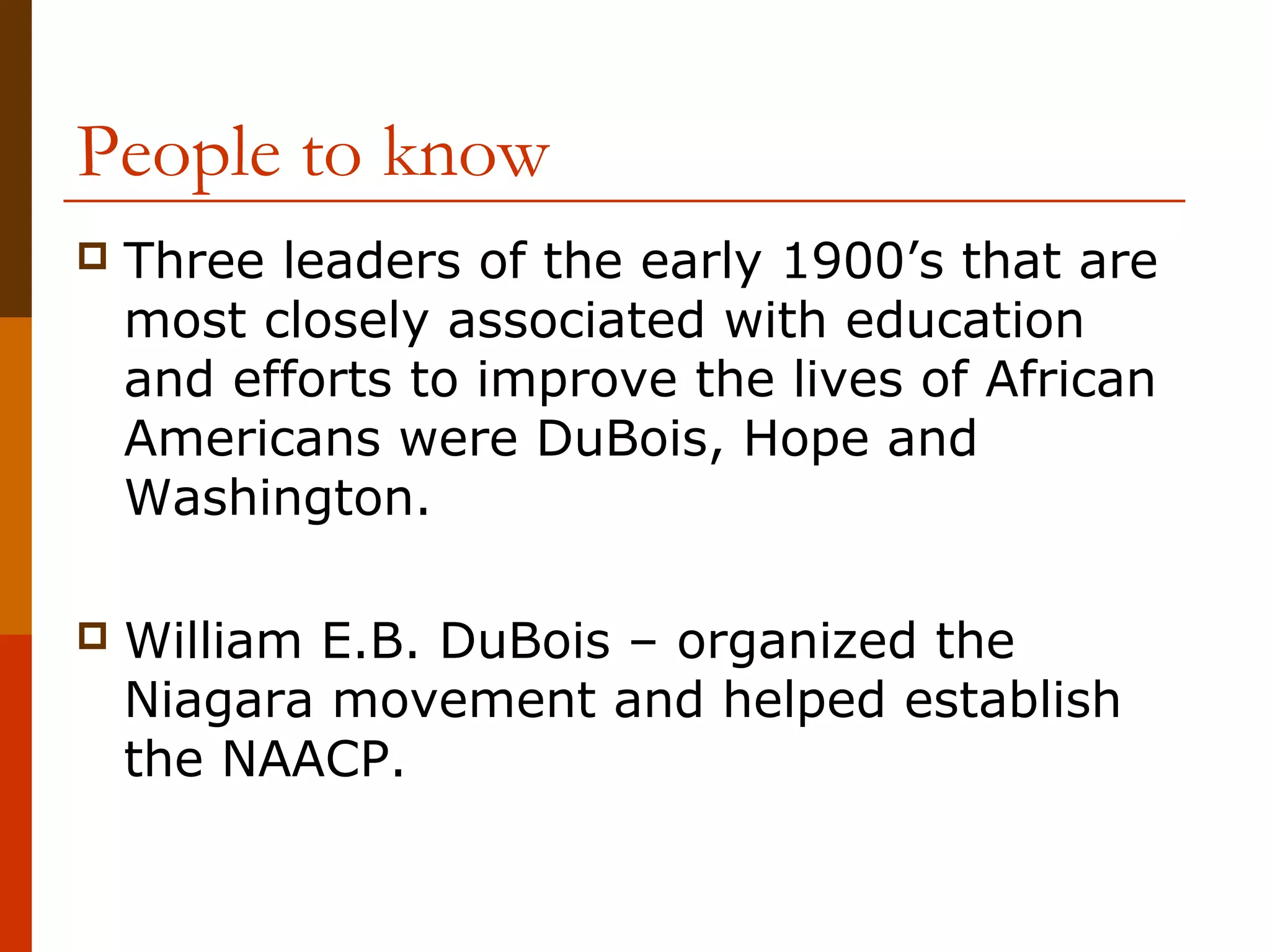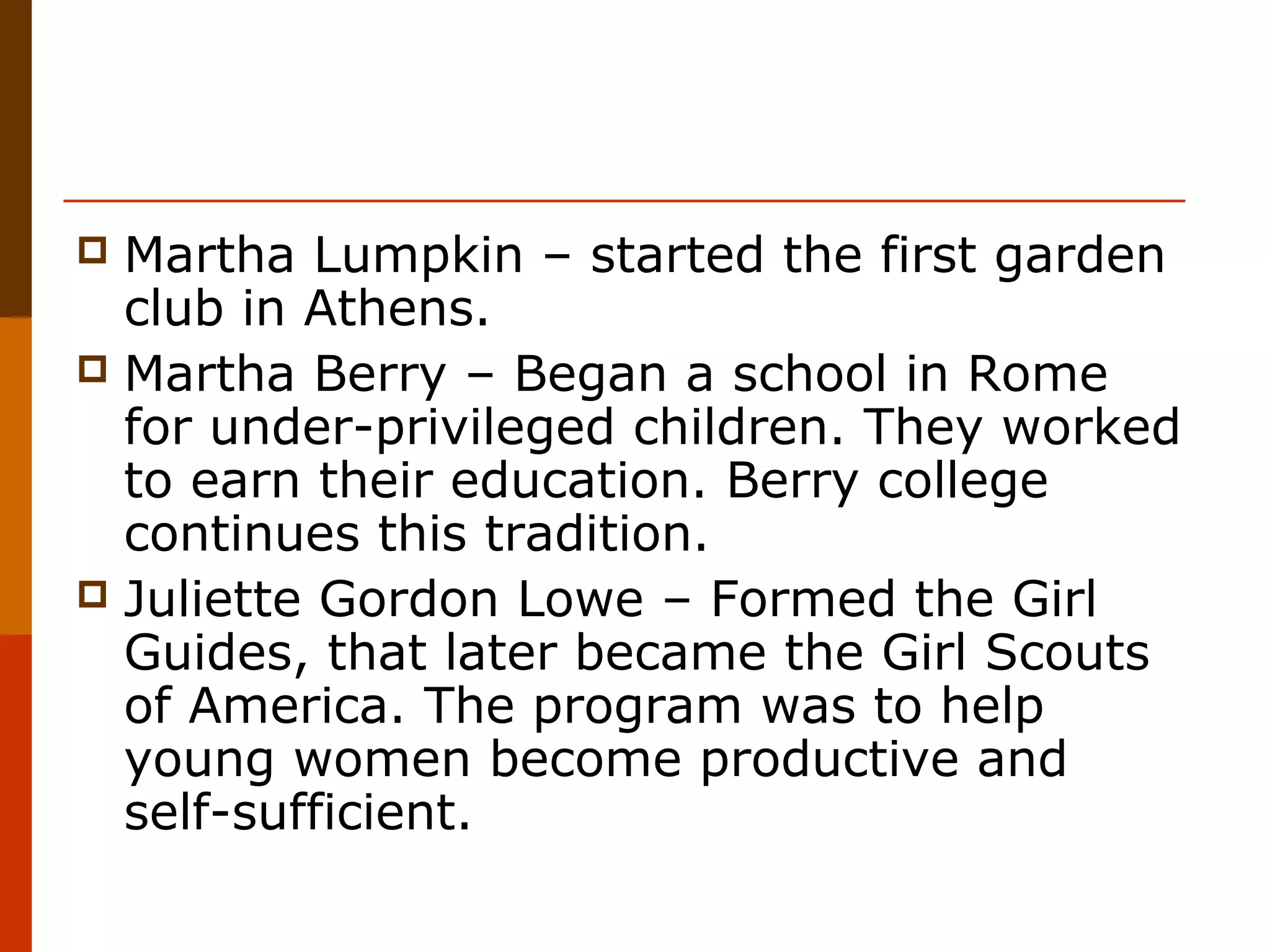Georgia in the early 1900s had a primarily agricultural economy dominated by cotton farming. Most Georgians lived in poverty as farmers or tenant farmers. To encourage industry, Atlanta held fairs showcasing the state's resources which attracted some textile mills. Racial discrimination and violence against blacks was common. Sharecropping and tenant farming arrangements maintained the economic and social status quo for many poor whites and blacks.


